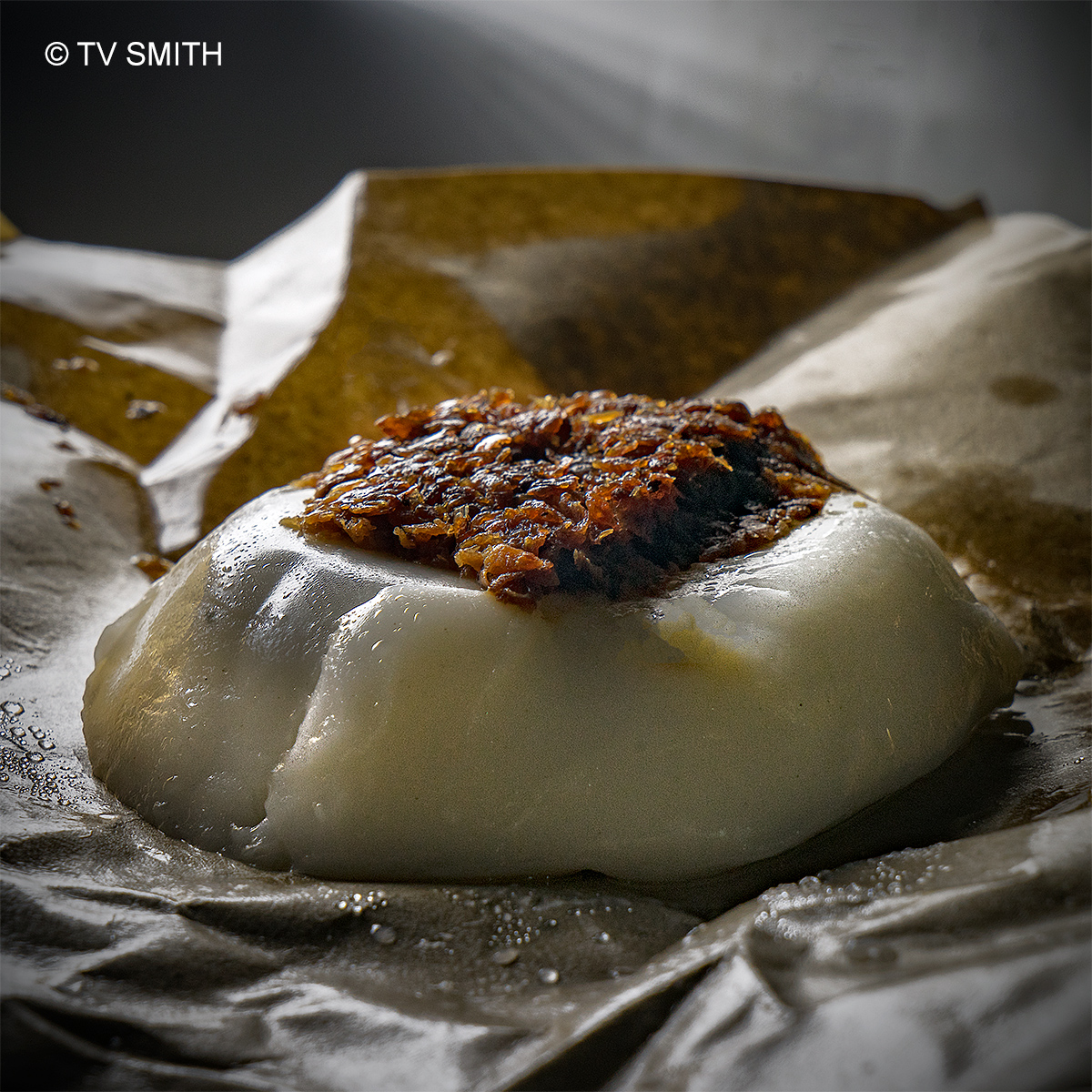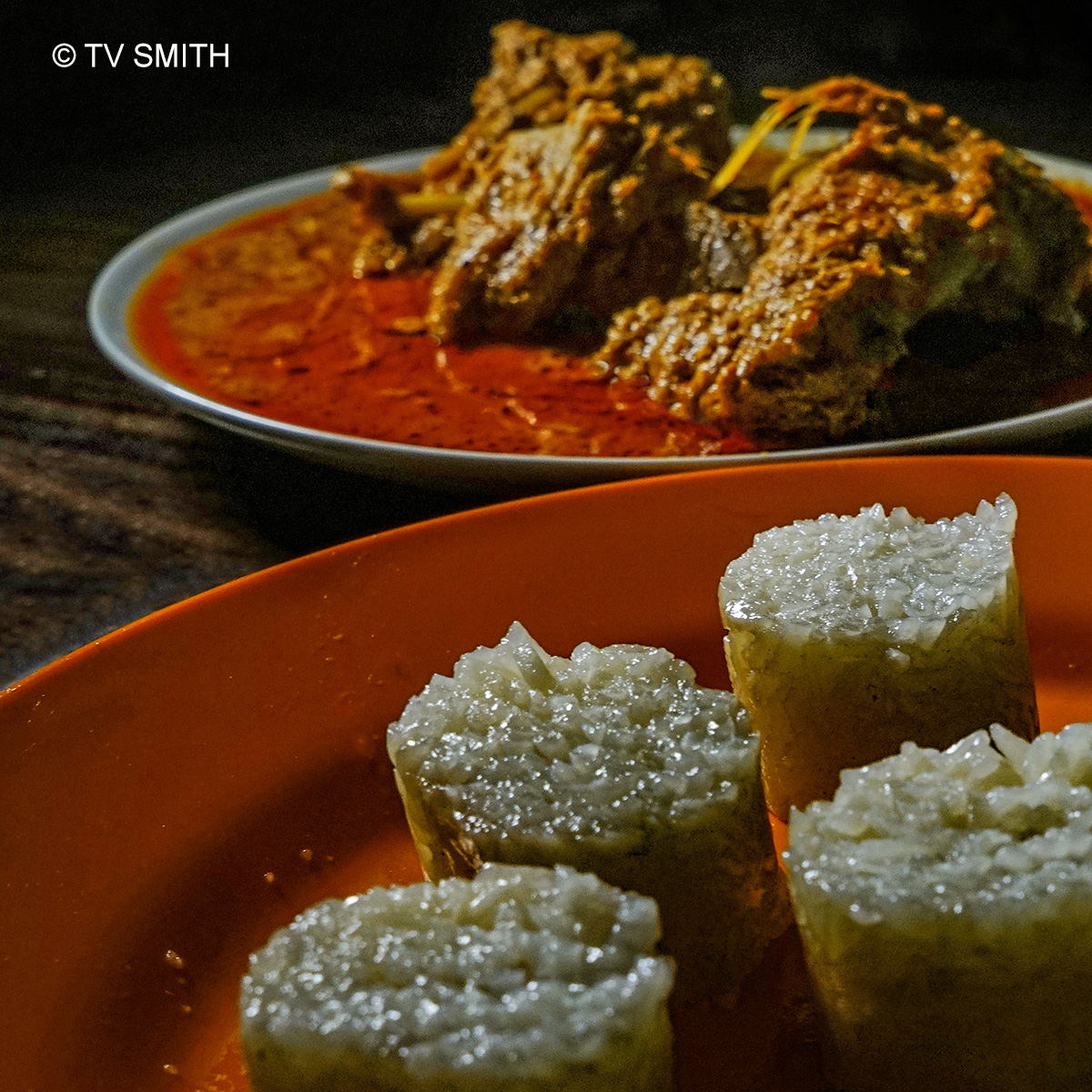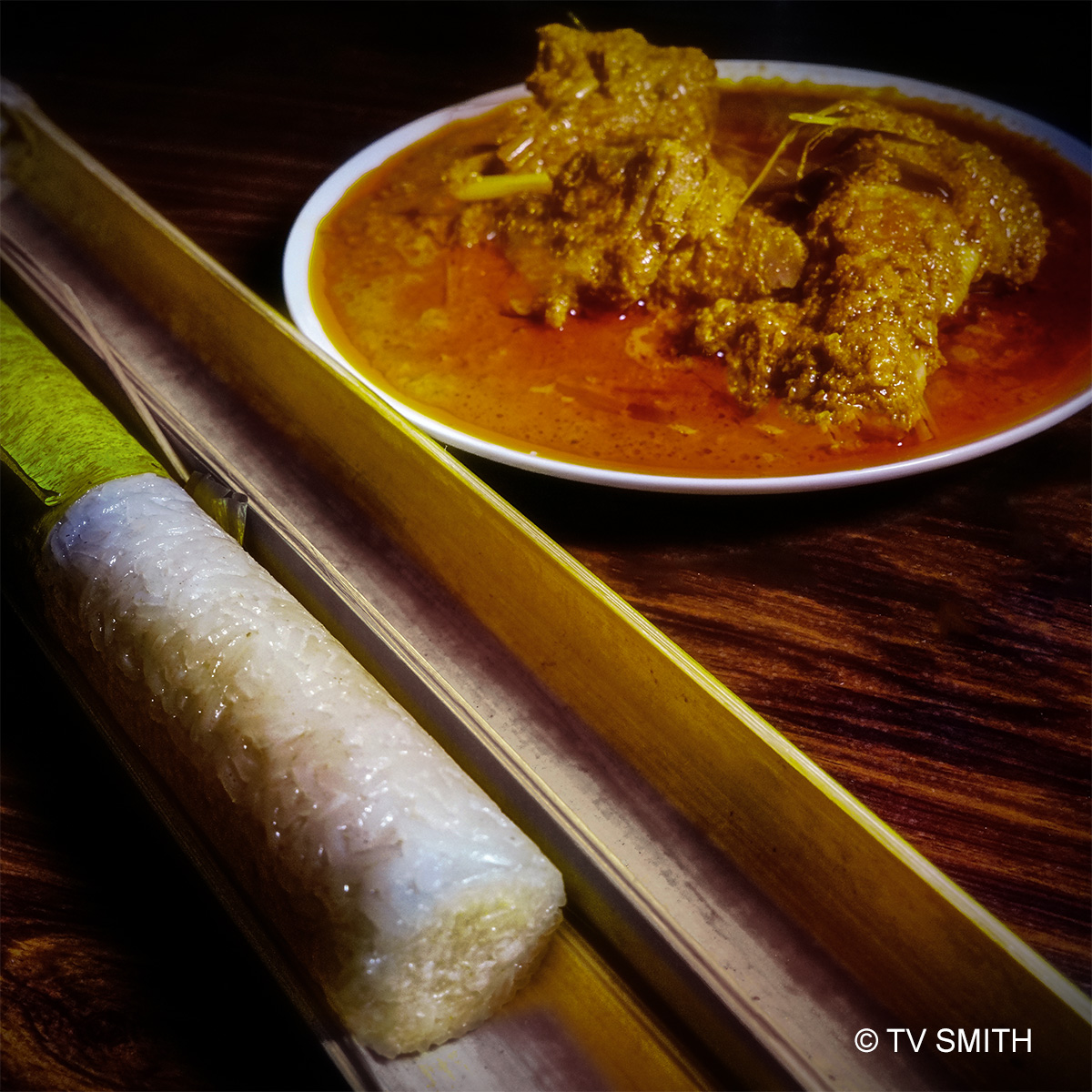I always thought the fried rice has some kind of American influence. Indeed it has a fascinating history and is crossover food.
The common explanation and assumption is that the U.S.A. abbreviation stands for Udang (Shrimps), Sotong (Squid) and Ayam (Chicken). There’s also an omelette on top or wrapped around the fried rice.
Its real origin or influence ought to be the American Fried Rice (ข้าวผัดอเมริกัน) dish, invented by the Thais during the Vietnam War.
It has American side ingredients like fried chicken, omelette, hot dogs and ketchup. The Americanization of the spicy Thai fried rice was to cater to American soldiers stationed in Thailand during the war.
Today, it can be found in the menu of Thai restaurants in the States and is listed as “Khao Pad American”.
Not surprisingly, many Tom Yam and Nasi Pattaya stalls serve this dish here. Locally, this is a dish where no two restaurants serve it the same way.
This one is from Restoran Studio 5 in Ampang Jaya. Even the 3 chefs in the 3 shifts here, cook it differently. Show this pic if you want the same version.
Sony Alpha a7R, ISO 1600, f13, 1/80 sec.




